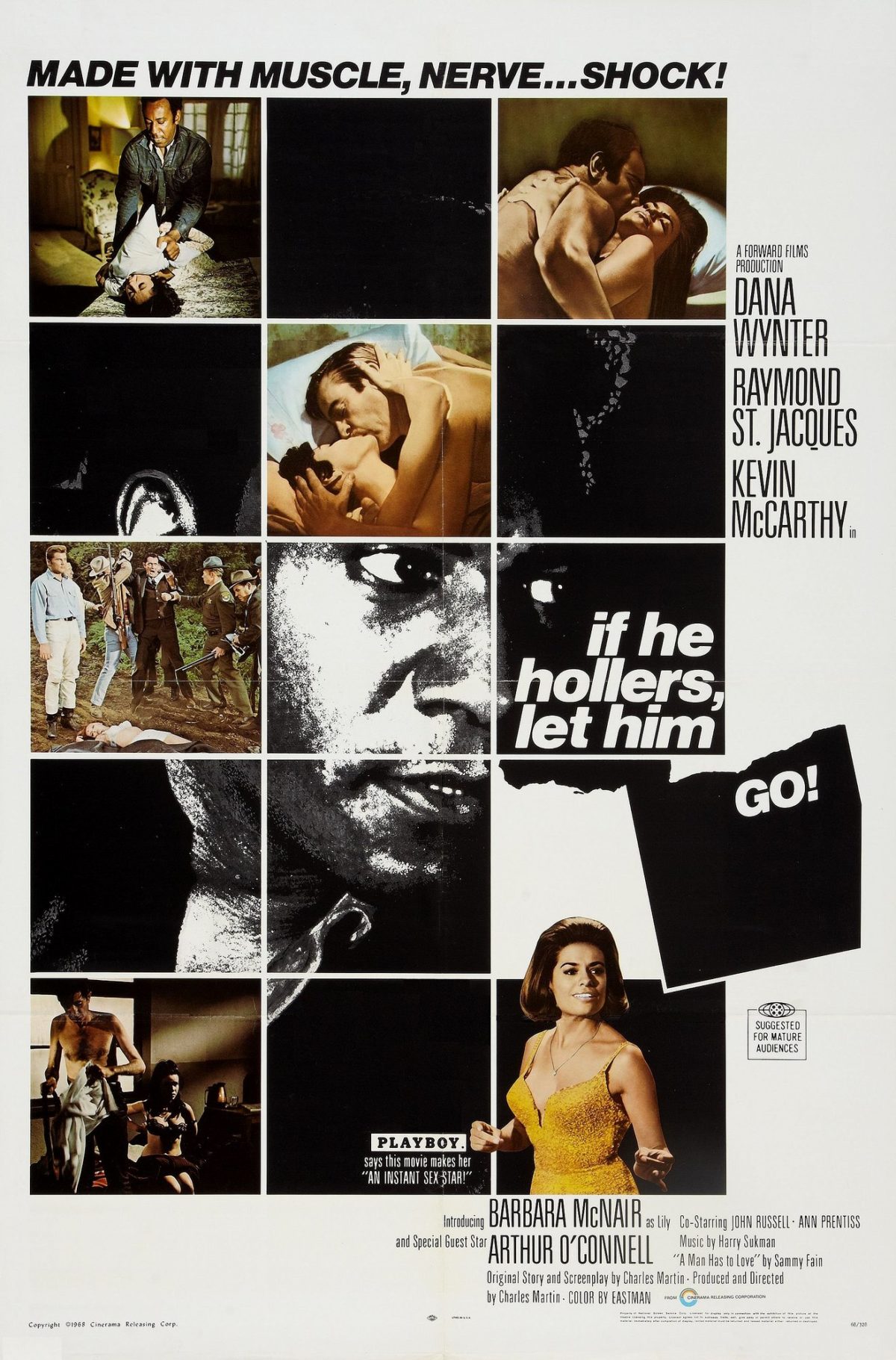In the previous two books we read, there is an explicit depiction of the “ideal.” Between the handsome and cool anti-hero or the pure yet sexualized femme fatale, each book had characters or plots that set a standard of aspiration. However, in If He Hollers, Let Him Go, we are immediately immersed in the darkness of Bob’s world. The presence of the ideal is still present but is just exhibited differently. Instead of being on the side of the idealistic characters such as Sam Spade who attempts to save the day with his quick intelligence and smooth wit, the readers are exposed to the characters on the other side that are striving to become the “ideal”. This new perspective helped me to understand noir better because I gained a more encompassing view of what descending into the darkness really meant.
Upon our introduction to Bob, he admits it is “hard enough each day just to keep on living” (4). Right away, we know he is struggling. As we read, Bob’s gaze on reality becomes more and more confusing to not only himself but also to us readers because he becomes so obsessed with finding the manhood that is robbed from him as a black man. Constant gaslighting causes Bob to question everything, making him somewhat of an unreliable narrator. This chaos and confusion, within his mind, is the darkness we do not see in The Maltese Falcon and Farewell, My Lovely because these books are both centered around white characters. If He Hollers, Let Him Go shines a spotlight on the darkness. As we have discussed in class, this darkness is where the terrors and dangers of racism and paranoia hide. However, the book calls attention to this darkness, forcing the reader to contemplate it.
Throughout time, people have been hesitant to talk about scandalous subjects such as race. By writing from the black person’s point of view, If He Hollers, Let Him Go redefines the noir characteristic of idealism. Bob is honest beyond a doubt, which can be uncomfortable for a lot of people. However, his presentation of darkness and the unideal further defines what the noir ideal is, the reality that Bob constantly craves. Additionally, characters like Alice represent those on the margins who can straddle the line between light and darkness. She acts as a comparison within herself by putting on white person mask and becoming one with the ideal or taking off the mask and hiding her flaws in the dark.
Between the three books we have read, each one’s inclusion of the contrast between dark and light strengthens the concept more and more. Without the comparison, we lose the context of the other, which is why it is essential that noir as a genre includes both.

I’d be interested in discussing how our own biases as readers inform this interplay between light and dark. When you mention Alice straddling the line between light and dark, I wonder what you mean by that? Are we talking about a moral boundary or the racial boundary that she moves across for her own benefit? I don’t know that Chester Himes has necessarily written her to represent a moral lightness, though she may represent a way for Bob to save himself from his descent into the overwhelming moral darkness of contemporary society.